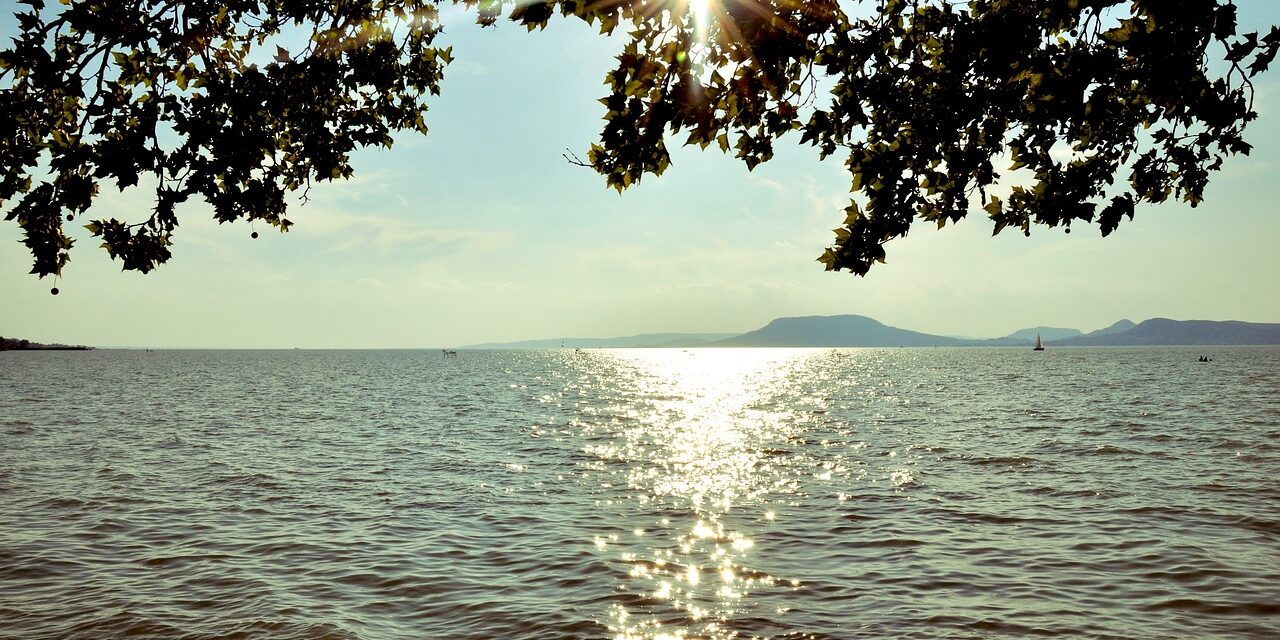It's unbelievable, but it's only been a hundred years since masses of people bathe in Lake Balaton, not long before only eccentric hobbyists of bathing clubs indulged in the strange fad, also dressed from head to toe. There was no mention of swimming.
But it was already a miracle that it was surrounded by some kind of interest, because for centuries the lake was not even noticed. Even if they did, they saw the water stretching along the edges as a geographical obstacle, which annoyingly crossed the border for traders traveling from south to north across the Danube and back.
It was so confusing that Maria Theresa was empress and queen
he would have simply drained the useless, stinking lake, plowed up its bed, and planted it with grain.
He even had an impact study made on this in 1766, in which they also calculated how much grain and hay could be grown in the Balcsi area, because he needed a lot of cheap crops for his wars. However, he entrusted the financing and implementation of the brilliant plan to local landowners and politicians, so nothing came of it.
The lake, known today as gentle, was smoother at the time, its water level fluctuated by five meters every year, therefore
Tihany, Szigliget and Fonyód were islands for most of the year.
They didn't know what to do with it, but the romantics began to discover its beauty and wrote about it more and more often in their poems, "Néz a magyar, - ki Balaton / Szívemelő tájárol" (Sándor Kisfaludy: Somló, 1807), and the great Hungarian language innovator Ferenc Kazinczy named it Hungarian sea. But none of them had any idea of dipping into their lyrical subject.
He discovered Lake Balaton
It is not known what took so long, but only at the very beginning of the 1800s did it occur to György Festetics, who is connected to Keszthely, that the water of Lake Balaton can also be used for irrigation. He founded Europe's first higher agricultural school (Georgikon) in 1801. And, once the lake was there, he also started shipping on it, with his largest, twenty-seven-meter-long, two-masted galley named Főnix, for example, transporting wood and salt between Keszthely and Akarattya. If you had to name who discovered Lake Balaton, then it would be György Festetics, his name at that time became synonymous with the Hungarian sea. But he certainly didn't bathe in Lake Balaton either. Not only because at that time almost no one could swim.
Unexpectedly, a noble threw himself into the foam
However, an incident happened: Count Miklós Wesselényi swam the four kilometer distance between Füred and Tihany in 1836. Although a certain Baron Hompes was the first to be recorded as sailing in the Hungarian sea, according to archival data, the high-life and shapely Reformation aristocrat was the first to boldly swim out into the open water several times (he was also the one who survived the 1838 Pest flood he saved lives during that time, for which he was called the "flood boatman").
Anyone who dared to swim was reported
Life in Balaton was enlivened by Füred's sour medicinal water, so much so that Füred quickly became a fashionable and popular meeting place for the well-to-do. But here, too, the interesting thing was not the lake, but the sour well and the bubbly social life that developed around it. The newly erected buildings were designed to block the view of the lake, and the banks were lined with servants' quarters, sheds, stables, and vegetable gardens. On the other hand, there was already a spa center whose complaint book complained that "the swimming practiced by some gentlemen around the women's section would be prohibited".
They didn't bathe in the lake, but they reshaped it
Even though Lake Balaton did not attract many people, its shape was changed due to a railway engineering mistake. It was planned to run the newly built railway connecting Pest-Buda with Nagykanizsa along the southern shore, but the locals warned the engineers who marked the route in vain that the water in the lake is currently low, and it is usually much higher.
they were not listened to, the rail pairs were drawn close to the shore, straight as an arrow, on the floodplain.
In 1862, the spring ice blocked and stopped the railway traffic, and it was decided that instead of dismantling and moving the rails further from the coast, they would rather drain part of the water of Lake Balaton through the Sió canal. The Hungarian sea was lowered by 95 centimeters, thus creating the well-known silhouette of Lake Balaton, with the southern coastline almost drawn with a ruler.
Already in this form, a newspaper duck started sailing on her, and in August 1882, the first sailing competition was organized, in which the large Queen competed with the slender Princess and Richard Young's English shipbuilder Mariská.
Bathing is also exempted for Lake Balaton lovers
In 1880, there were only two bathing places on Lake Balaton, Füred and Keszthely, but around the turn of the century, more and more bathing associations were founded, however, even at that time, most people were afraid of going into the water. Even Károly Eötvös, the author of the highly successful essay novel Utazás a Balaton köre (1900), replied to a friend who asked if he had ever bathed in Lake Balaton, that "The elf bathed! I'm not a buffalo to hide in a puddle!". However, his book was a kind of confession of love for Lake Balaton.
After Trianon everything changed
The breakthrough came after Trianon, the lake became the target of more and more people in the mutilated country, and the genre of tourism (traveling for fun) also began to spread around this time. No one liked splashing anymore, in fact. Starting in the 1960s, Lake Balaton was literally full every summer. And the peak fell in 1980, when the (forced) meeting place of East and West Germans was also here. Many millions of people bathed in it for decades, which was also reflected in the water quality: the blue algae that appeared unexpectedly in 1975 (which is actually green in color) brought Lake Balaton to the lowest point in its history by 1994. Since then, the number of vacationers has slightly decreased, and the water quality is stable. So much so that you can even drink the water of Lake Balaton.
Featured Image: Pixabay













